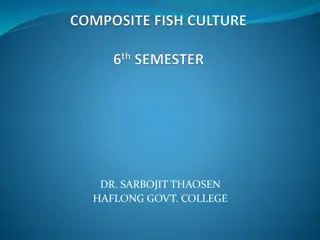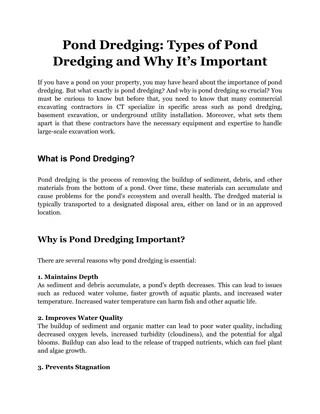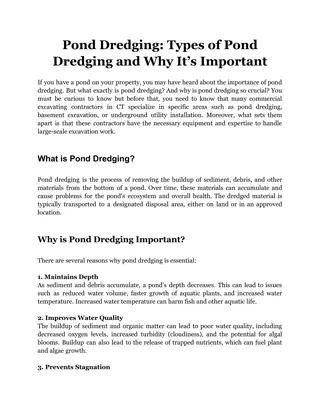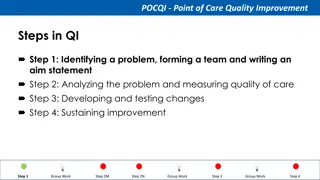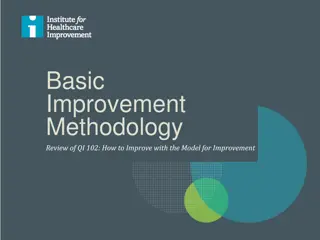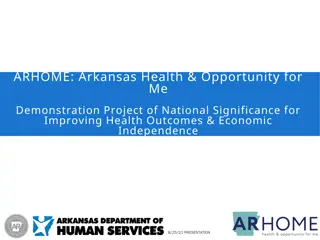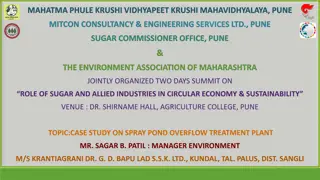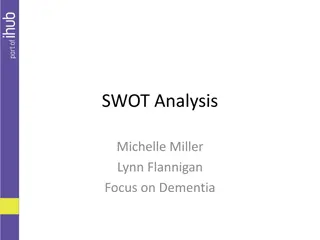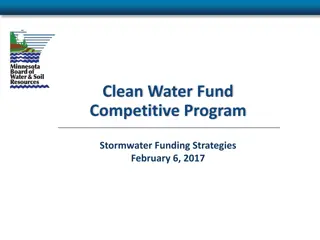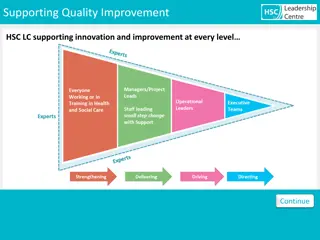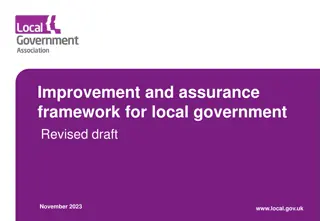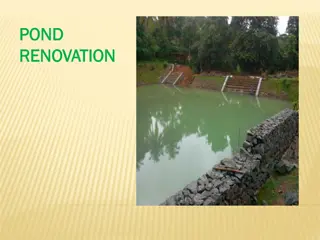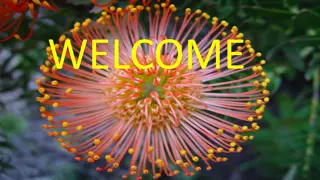
Understanding Water Composition in Dee Park Pond
Discover the comprehensive analysis of the water sample from Dee Park pond, including pH levels, ammonia, nitrite, nitrate, and the importance of maintaining a balanced ecosystem. Learn about the impact of key elements on aquatic life, such as fish and plants, and the strategies for promoting biodiversity and environmental sustainability around the pond. Stay informed to ensure the well-being of the pond ecosystem!
Download Presentation

Please find below an Image/Link to download the presentation.
The content on the website is provided AS IS for your information and personal use only. It may not be sold, licensed, or shared on other websites without obtaining consent from the author. If you encounter any issues during the download, it is possible that the publisher has removed the file from their server.
You are allowed to download the files provided on this website for personal or commercial use, subject to the condition that they are used lawfully. All files are the property of their respective owners.
The content on the website is provided AS IS for your information and personal use only. It may not be sold, licensed, or shared on other websites without obtaining consent from the author.
E N D
Presentation Transcript
WHATS IN THE WATER? On the 24thof October, Toni and Tom delivered a sample of the water from the Dee Park pond to Contact Pets have it tested. We received the results on the 29thand they are as follows: ammonia 0, nitrite-0, nitrate-<5, pH-8, KH-17(dKH or ppm?). These results may not give much away at first glance so, after doing some research, I can explain. pH is what you re probably most familiar with from school science lessons, this is the level of the water s acidity or alkalinity. Acidity being a lower number on the scale, with alkalinity being a higher number on the scale. 8 is slightly alkaline but shouldn t be a problem as the ideal pH levels for fish and plants to thrive in water is between 6.5 and 8.5. We will keep an eye on this, if the water becomes too alkaline (which seems more likely at this point) it can increase ammonia toxicity. Algae blooms can cause a high pH in the water so it s something to look out for. Ammonia can kill off life in our pond so it could be detrimental if not looked after. KH is carbonate hardness, which is the measure of calcium carbonate present within the water. Nitrifying bacteria detoxify the pond water through a process called biological filtration. These bacteria prevent the ammonia and nitrate levels rising too high. Calcium carbonate comes into this as it's what the bacteria rely on to survive. KH should ideally range from 5-8dKH, and our results weren't very clear on KH unfortunately. We don't know if it was measured in ppm (parts per million) or dKH (degrees of carbonate hardness) so we can't say for sure if it's a concern right now or not. The best thing we can do is to keep observing and testing over time. I imagine the pond will do a good enough job of regulating itself anyway as long as it isn't interfered with too much.
WHATS IN THE WATER? (CONTINUED) Ammonia, nitrates and nitrites are all part of the nitrogen cycle. This is vital for the health of the pond. Ammonia and nitrites are both incredibly toxic to fish, even just small amounts can be destructive. Nitrates are not as harmful yet still potentially pose a threat as they contribute to the growth of algae. With ammonia and nitrite being so dangerous, the closer these values are to 0, the better. Nitrate levels should stay below 40ppm as not to encourage algae to grow. Like I mentioned before, algae can cause an increase in the pH of the pond but can also reduce light reaching other plants in the water as well as reducing the amount of oxygen in the pond when it decomposes. The pond should naturally be able to balance itself out and nature will look after itself in most cases. However, where human interaction takes place (as it does on Dee Park), there can be disturbances in how natural things will regulate such as chemicals entering the water which could be damaging. Especially in the case of flea spray, it can just exterminate wildlife. It s important to stay responsible and respectable when it comes to wild/natural green spaces and any outdoor area really.
WHAT CAN WE DO? We are planning to plant more wetland flora in and around the pond for the sake of biodiversity. It ll provide more food, habitats and places for creatures to lay eggs. We aim to include 127 total plants, with 11 different native species, consisting of: water lily (2), water crowfoot (15), loosestrife (15), forget-me-not (15), brooklime (12), water plantain (12), water mint (12), marsh marigold (15), taller yellow flag (15), hemp agrimony (7) and marsh cinquefoil (7). These species shouldn t negatively affect anything in or around the pond but we will continue to observe and test, just in case. These plants will spread on their own to wherever is suitable nearby so, while they may look scarce initially, they will soon grow and fill the pond area. Currently, we don t want to interfere with how the pond will naturally manage and regulate itself. The pond plants we re going to implement should not affect this or cause any issues. So, for now, we will keep surveying and studying, until we see a major issue that requires us to step in. Luckily, we don t have anything that stands out as a big problem yet, meaning no urgent action is necessary. The only things I can think of acting on sooner rather than later (other than the planting) would be: KH levels of the pond. I imagine they will be adjusted naturally by the pond and self-managed but if it appears to be outside of the ideal range in future, then we will have to manually introduce something that can help with this. Increasing the aeration to prevent future issues. While we don t have any catastrophes to worry about for now, that doesn t mean we never will. I like the idea of adding a small water feature to the pond that adds another point of interest to the park, while simultaneously making sure the oxygen in the pond remains at a suitable level. Aeration can also assist with maintaining a clean and clear body of water by allowing enough necessary oxygen for helpful bacteria to breakdown organic matter. This would be a pre-emptive solution to the accumulation of harmful substances.
WHAT ARE WE DOING? On the 5th of Feb Tom scarified the border of the pond with a rake and scattered some wetland wildflower seed. The idea is that when the wildflowers grow and bloom, it'll bring colour to the pond edges, provide nesting spots for dragonflies and damselflies as well as attracting more pollinators too. The wildflower mix used contains seeds of 22 different species. It is !% hemp agrimony, 8% wild angelica, 3% water avens, 6% hedge bedstraw, 6% lady's bedstraw, 8% meadow butter cup, 7% red campion, 1% figwort, 2% gyspsywort, 3% hard rush, 10% yellow-flag iris, 2% purple loosestrife, 7% meadowsweet, 4% ragged robin, 4% devil's-bit scabious, 4% pendulous sedge, 8% self-heal, 3% sneezewort, 3% soft rush, 2% square stem St John's-wort, 4% greater bird's-foot trefoil and 3% tufted vetch. We received this wildflower mix (and a few others) from Keep Wales Tidy, who obtained them from Landlife Wildflowers who offer a wide variety of seed mixes for a wide variety of areas. This is the first step in updating the pond. We plan to erect a dead wood fence, along the inside of the current fence, in the near future. This will provide nesting places for birds. This won't replace the current post & wire fence but it should add a more natural and rustic look. We'll keep gaps for hedgehogs and other small animals to acces the pond but hopefully keep dogs and people out.
WHAT CAN YOU DO? We do rely on you to not cause harm to the environment. You don't have to make any extra effort to help but please do be aware of what can damage the wildlife around you including, but not only, the pond. Dogs especially can cause problems for us and the fauna of the pond. "Frontline" specifically is an anti-flea spray that can kill off some of the things living in the water, which is obviously a big issue for what we aim to keep as a natural, self-sustaining ecosystem. There are other problems that come with pets where they're not supposed to be. They could get ill, for example, if they swallow any of the water or algae. We can't be certain that the water in the pond won't hurt your dog, so we ask that you don't risk it. Dogs also tend to dig holes and disturb the flora as well. Again, this goes against what we want to achieve. I'm sure your pets are very well behaved but our priority of the pond itself so please don't encourage or allow your pets to go beyond the fence, it is there for a reason. Do you have ideas on how to improve the pond in the future? We d love to know what you want to see happening. While we may not act on your feedback immediately, it will be taken into consideration and may be incorporated in our plans going forward. If you d like to find out more, have suggestions to give, or want to volunteer with us, then please get in touch! Our email address is pfy@careandrepairnew.co.uk You can also message us directly on Facebook and Instagram at: DeeParkCommunityWoodland
REFERENCES The images are taken by one of us Rangers but if you d like to do your own research, all the refences for information can be found in the list below. This is where I found almost all the information included in this PowerPoint so that I could understand what the results meant. I hope you found this insight interesting and intriguing, thanks for reading. How to Test Pond Water: A Complete Guide Pond Haven What is KH and why is it important? - Kitsu Koi 7 Benefits Of Pond Aeration Pond Haven Do Pond Aerators Really Work? Everything You Must Know Pond Haven What Are The Ideal Pond Water Parameters? Envii The Importance of KH in Your Koi Pond How to Control pH and KH in a Pond - My Backyard Life Wildflower Seeds for Wetland and Pond Areas 100% - Landlife Wildflower

